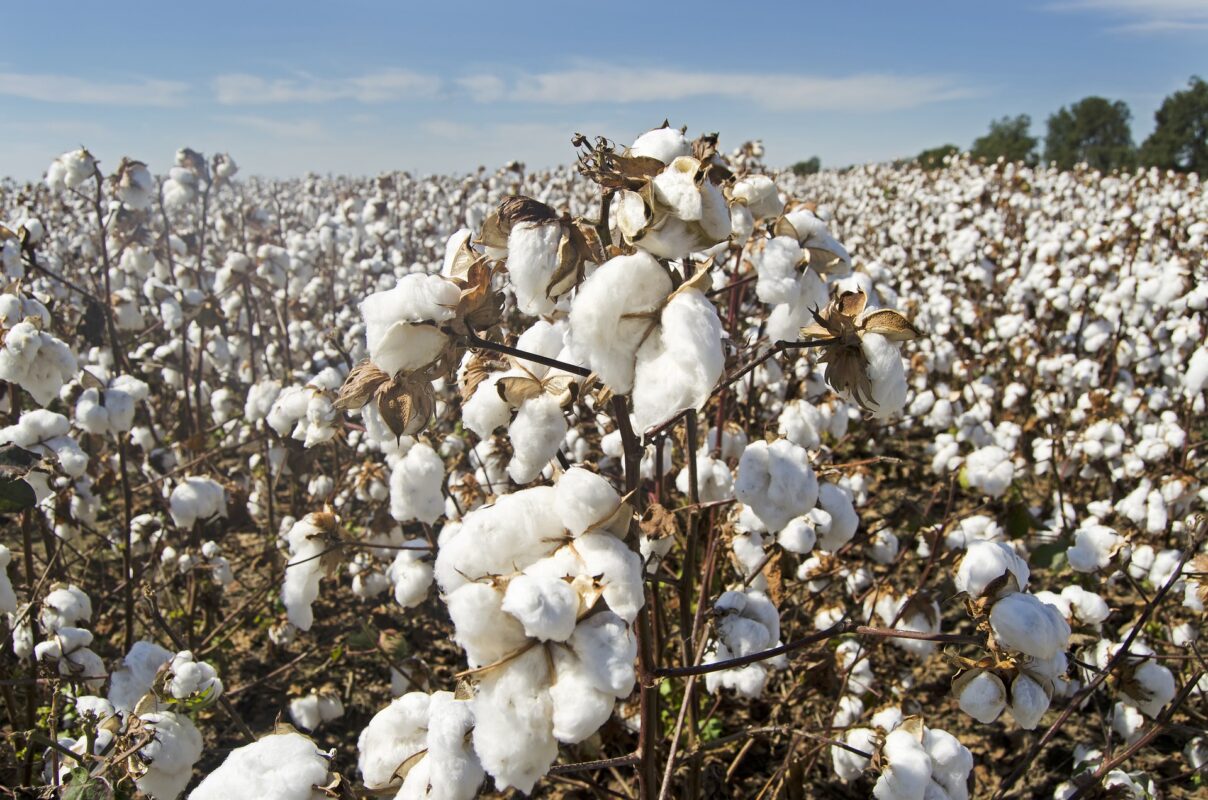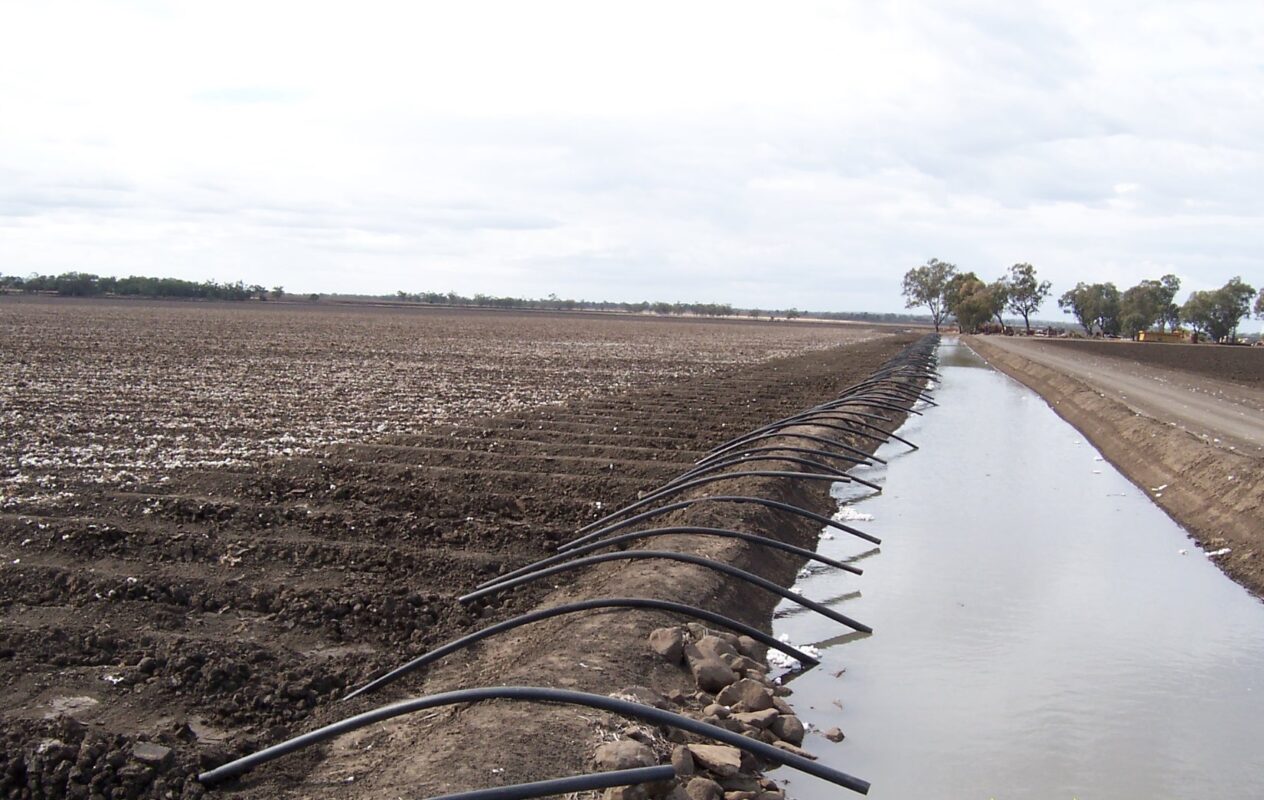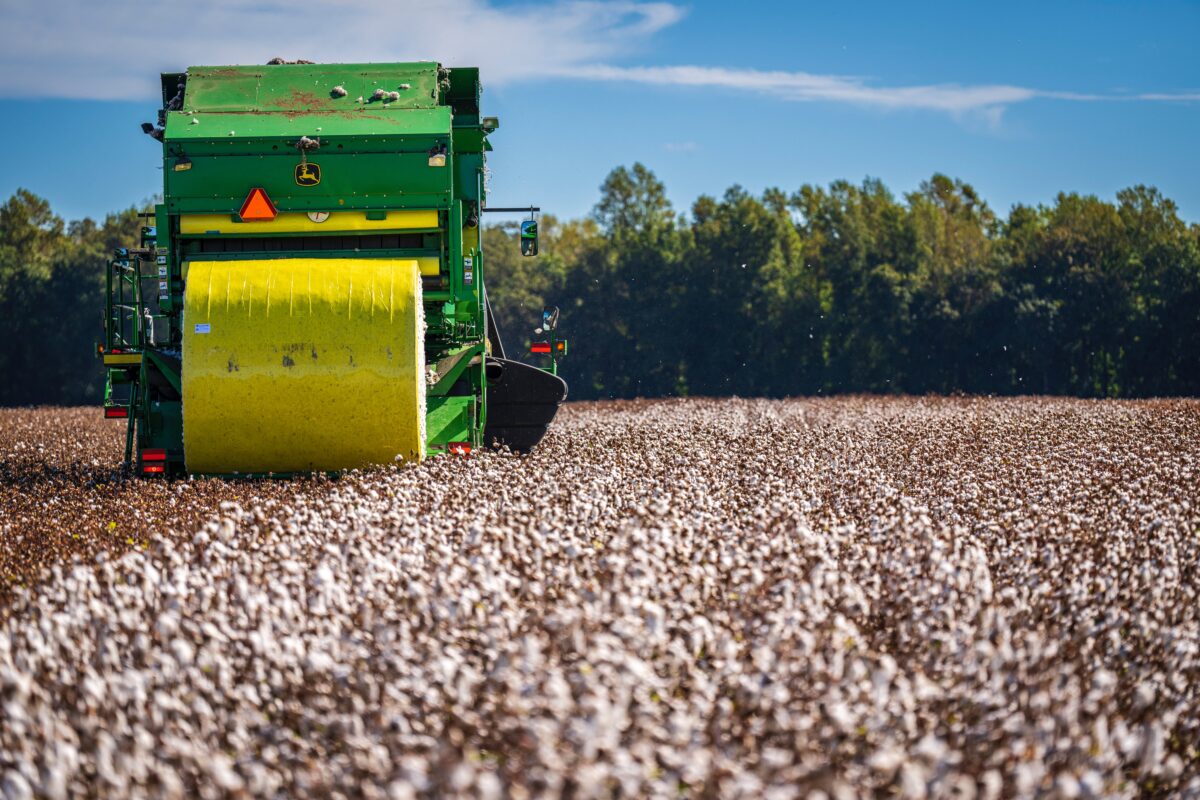Cotton – it’s only natural Australia's cotton industry is known for producing high-quality fibre using efficient and sustainable farming practices. With a focus on environmental responsibility, the industry is well-positioned to continue its success in the global marketplace.
Do you know how cotton is farmed?
Cotton in Australia is mainly grown in New South Wales and Queensland. It is a commercial crop usually grown on large farms and mostly irrigated. Planting takes place in spring and it is harvested in late summer or early autumn. The plants are grown from seeds and are spaced out in well-prepared fields. They are tended throughout their growing cycle with regular watering and fertilising, and actions to control pests and weeds.

Seasonal jobs are available on cotton farms mainly during the watering phase, but work is irregular as irrigation supplements natural rainfall so is not always necessary.
The flowers on a cotton plant are known as ‘bolls’, which is where the fibres, or lint, come from. Once mature they are harvested using specialised harvesters sometimes known as ‘pickers’. The cotton is left in the field in large, round, tightly-packed bales, which are loaded onto trucks and transported for processing at centralised facilities known as gins.
Gin work – just the tonic!
At the gins the bales are broken open, foreign matter and seeds are removed and the lint is cleaned. The cleaned, raw cotton is packed into smaller, much tighter bales, ready for export.
Work in the gins is popular with backpackers in particular because it lasts a few short months and in areas that qualify as ‘regional’ for the purpose of extending Working Holiday visas. Although the gins are noisy and dusty, they are mostly modern facilities with good, safe work practices, and offer long shifts on seven-day rosters so the pay is good.
A big export earner
Around 90% of Australia’s cotton is exported, mostly to Asian markets.
Each year, on average, Australian growers produce around 680,000 tonnes of raw
cotton fibre worth over $1.8 billion to the economy. However, thanks to plentiful rain, the 2021-22 season produced a record $5.3 billion worth.
Growing Regions
Some of the major cotton growing regions in Australia include:
- Namoi Valley, New South Wales
- Darling Downs, Queensland
- Murrumbidgee Valley, New South Wales
- Lockyer Valley, Queensland
- Macquarie Valley, New South Wales

These regions have rich soils, access to irrigation water and a favourable climate, which makes them ideal for growing cotton. The industry in Australia is highly competitive and advanced, with farmers using modern technologies and practices to optimise their yields and quality.
Dryland (rain grown) cropping
Close to a quarter of Australian cotton is grown without irrigation and is known as dryland production. This relies on rainfall and stored soil moisture to support the growth and development of the plants. Dryland cotton is typically grown in regions with a reliable and consistent rainfall pattern.
Dryland farming requires careful planning and management, as the farmers cannot control whether their crops receive enough moisture at the right times to support healthy growth.
This may involve using drought-tolerant seed varieties or practising conservation tillage to protect soil moisture. They will also monitor soil moisture levels and weather patterns to determine the best planting times.
Despite the challenges, dryland cotton can be a successful and profitable crop for farmers in the right growing conditions, and is an integral part of the Australian cotton industry.
Irrigated cropping
Most Australian cotton is irrigated, with applications of water controlled by either siphoning water from channels into laser-levelled furrows, or overhead sprinklers in centre-pivot or lateral format. Drip irrigation is increasingly being used to reduce water consumption.

The water is usually sourced from rivers, bores or reservoirs, and distributed through a network of channels or pipes. Irrigated cotton results in substantially higher yields, improved quality, and more consistent crop growth compared to dryland growing. However, it also requires significant investment in water management infrastructure and ongoing energy costs for pumping and distributing the water.
An emphasis on continuous improvement in sustainability is a hallmark of the Australian cotton industry. Compared to 1992, producing a bale of irrigated Australian cotton now requires:
- 48% less water
- 97% less insecticide
- 34% less land.
The Northern Territory
NT Farmers have been championing the expansion of the cotton industry in the Territory for years. The dream became a reality in 2019 with the launch of a 50-hectare trial. In just a few years the industry has flourished, with 8,000 hectares planted for the 2022 crop and 15,000 hectares going in for 2023. 95% will be grown as dryland crops.
Thanks to the use of genetically modified seed, cotton crops are now more resilient to pests and diseases previously a barrier in the Northern Territory, and reducing the need for harmful pesticides. With the success of recent cotton trials, even the sceptics are being convinced of the viability and sustainability of growing cotton in the north.
The rapid growth of the industry in the Territory has created numerous job opportunities. 2023 will mark an exciting milestone with the opening of NT’s first cotton gin which will directly employ 88 people. This is in addition to farm jobs like harvester operators, tractor drivers and spray unit operators, as well as technical positions for agronomy staff.
Work the cotton season
The cotton industry employs over 12,000 people Australia wide.

During the Australian cotton season, various types of work are available, depending on the sector:
- Farming and harvesting: Planting, growing and harvesting the crop is the job of the farmer or their farm-hands. This requires manual labour and the use of machinery.
- Ginning: The process of separating the seeds and impurities from the cotton lint. This requires both skilled workers to operate the machinery and semi-skilled people that are trained on-the-job.
- Transportation and logistics: Moving the cotton from the farms to the gins, then to the ports for export requires truck drivers, as well as shipping and logistics workers.
- Support services: Maintenance, marketing, and administration tasks also require staff during the cotton season.
The availability of work during the Australian cotton season will vary depending on the region, the size of the operation and seasonal demands.
Many cotton industry vacancies are listed on the Harvest Trail jobs board from March and early April.
To either list a vacancy or apply for a job, contact the friendly staff at the Harvest Trail Information Service Call Centre on 1800 062 332 for more information on the 2023 cotton harvest.
